This post may contain affiliate links. Please read our disclosure policy.
These gluten free cinnamon rolls are soft, gooey, and full of cinnamon-sugar flavor—just like the kind you thought you couldn’t have anymore.
The dough is easy to work with, they rise beautifully, and you can even make them ahead.
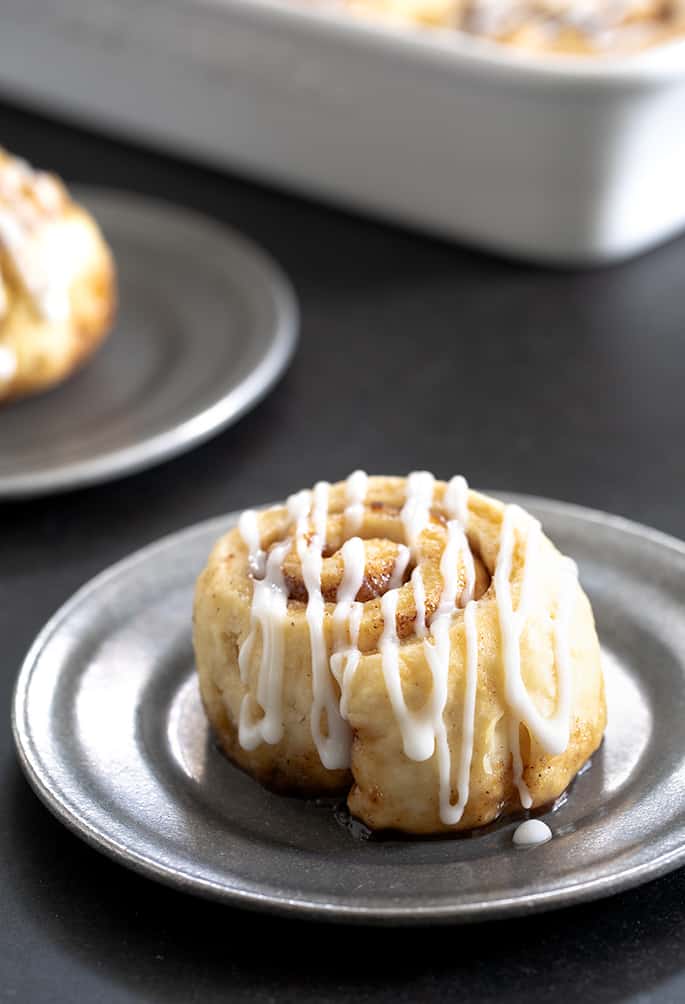
“OMG! These were incredible. Light, fluffy and the perfect sweet I have been missing. Will definitely make these again.”
my take
Why You'll Love These Rolls
Soft and tender: They rise beautifully and have that classic pillowy texture.
Easy to handle: The dough is simple to shape, especially after a quick chill.
Make-ahead friendly: Parbake and freeze so they’re ready when you are.
Balanced sweetness: Just enough sugar to satisfy without overpowering the cinnamon.
Tastes like the original: No one will guess they’re made without gluten.
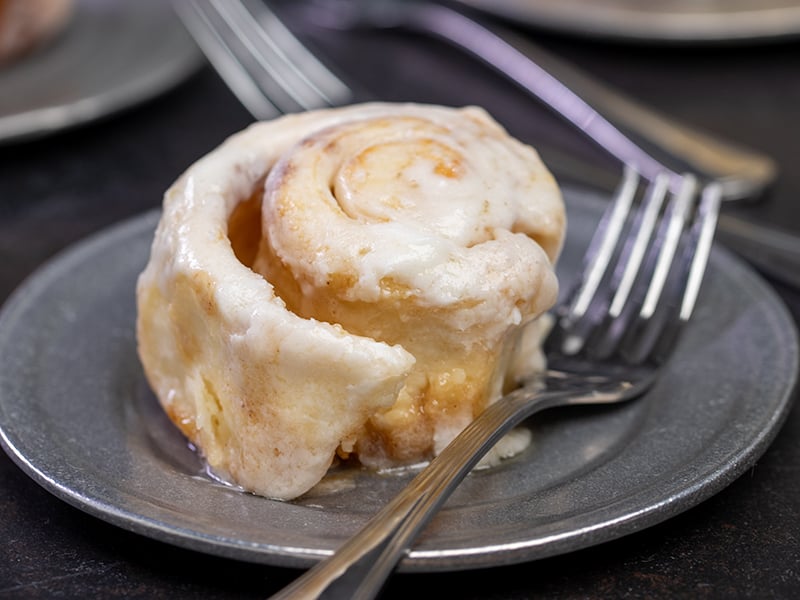
Recipe ingredients
For the rolls
- Gluten free flour blend: Use one of my recommended gluten free flour blends. Add xanthan gum only if your mix doesn’t include it.
- Tapioca starch: Adds extra stretch and softness.
- Milk powder: Adds richness and helps with browning.
- Instant yeast: For rise and flavor. Active dry yeast also works—see FAQs.
- Cream of tartar + baking soda: Work together to help the rolls rise and brown.
- Brown sugar + salt: For balanced flavor and tenderness.
- Apple cider vinegar: Adds a slight tang and helps with lift.
- Butter + egg + milk: Enrich the dough and keep it soft. Use full-fat milk.
For the filling
- Butter: Softened so it spreads easily.
- Brown sugar + cinnamon: Classic flavor and gooey center.
For the optional glaze or frosting
- Confectioners’ sugar + milk: For a simple pourable glaze.
- Butter + heavy cream: For a thicker, rich frosting. Use at room temp for best texture.
How to make gluten free cinnamon rolls
Make the dough
Whisk together the dry ingredients, then mix in the wet. Beat the dough in a stand mixer until smooth and pulling away from the sides. Chill it for 30 minutes so it’s easier to handle.
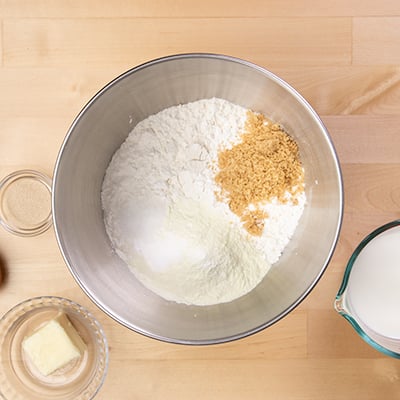
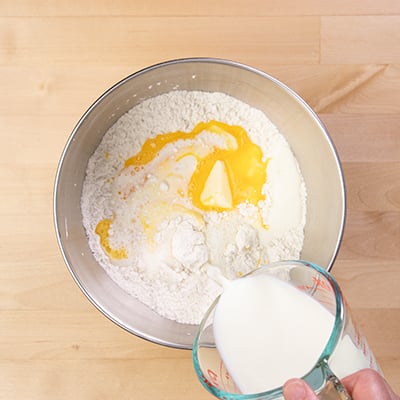
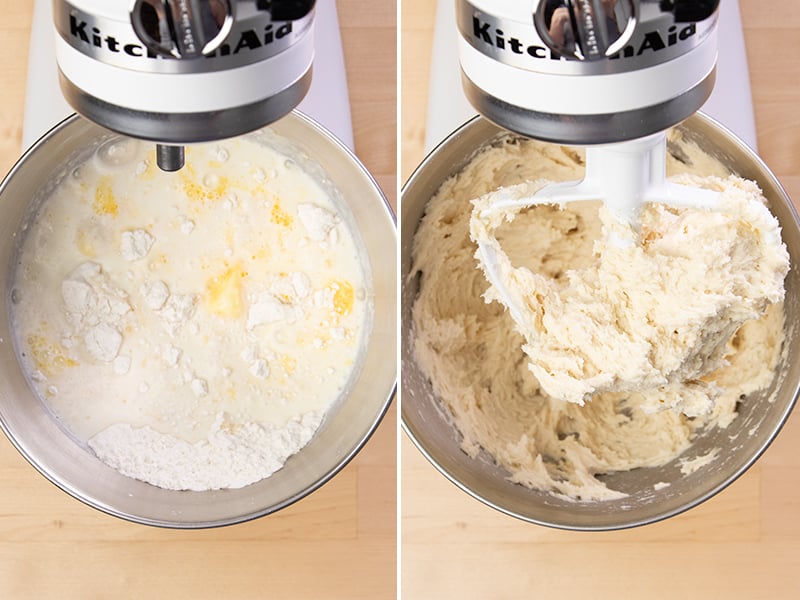
Roll it out
Divide the dough in half. Roll each half into a 9×12-inch rectangle about ½-inch thick on a lightly floured surface.
Add the filling
Spread with softened butter, then sprinkle with brown sugar and cinnamon. Pat the filling down gently to help it stick.
Shape the rolls
Roll the dough tightly from a short side into a coil. Slice into 6 even pieces using dental floss or a very sharp knife. Repeat with the other half.
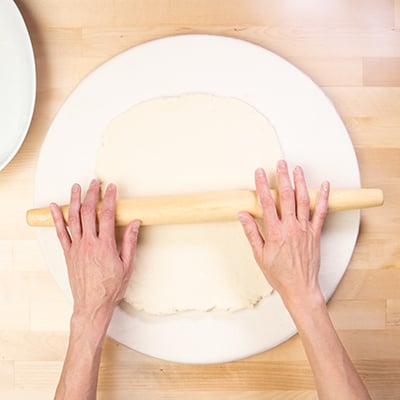
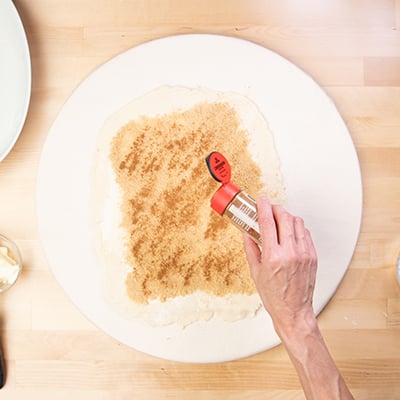
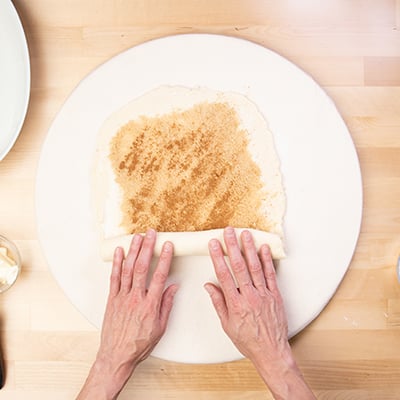
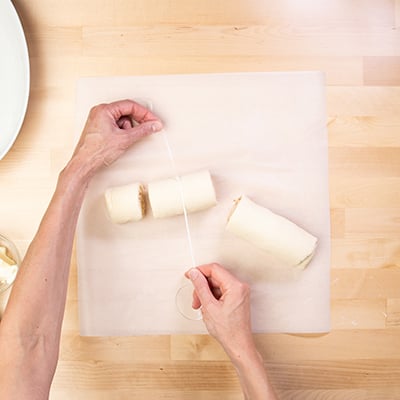
Let them rise
Place the rolls cut side up in a greased baking dish, cover, and let rise until puffy—about 50% larger, not doubled.
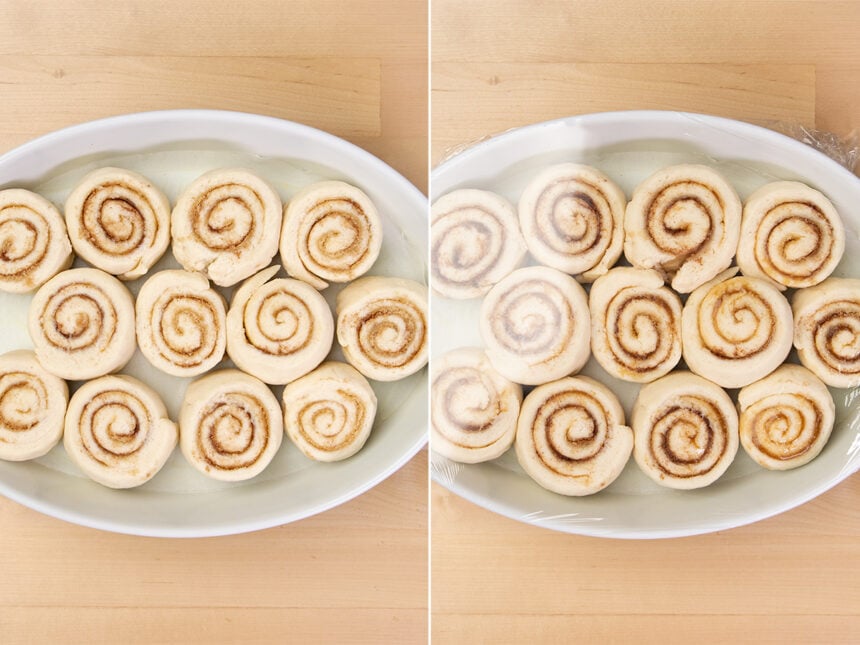
Bake and frost
Bake at 350°F until risen and lightly golden. While still warm, top with glaze or frosting, if using.
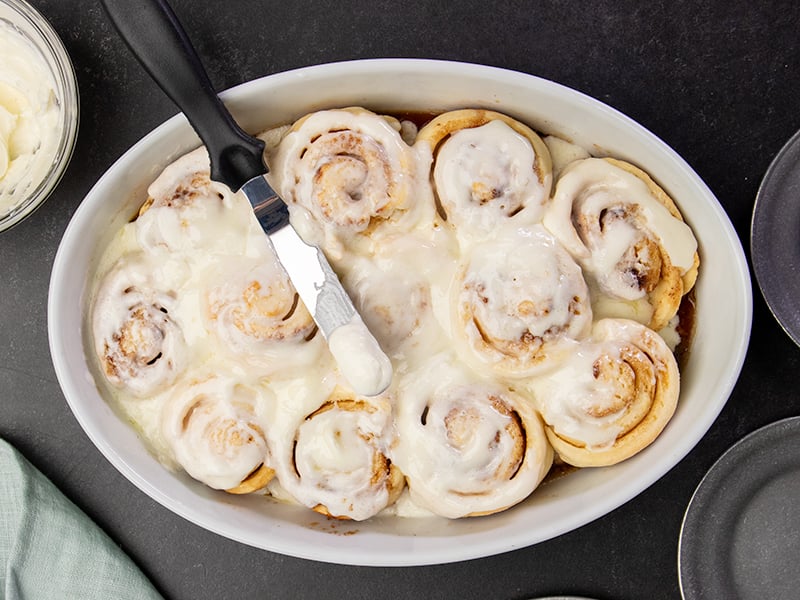
My Pro Tip
Expert tips
Chill the dough before shaping: Cold dough is easier to handle and less likely to absorb too much flour, which can lead to dense rolls.
Don’t let them overproof: They should rise to about 50% bigger—not double. Overproofed rolls lose structure and bake up flat.
Roll evenly and not too thin: A ½-inch thickness gives the best swirl without tearing the dough or losing filling.
Use dental floss to cut cleanly: It slices without compressing the rolls. If using a knife, saw gently with a very sharp blade.
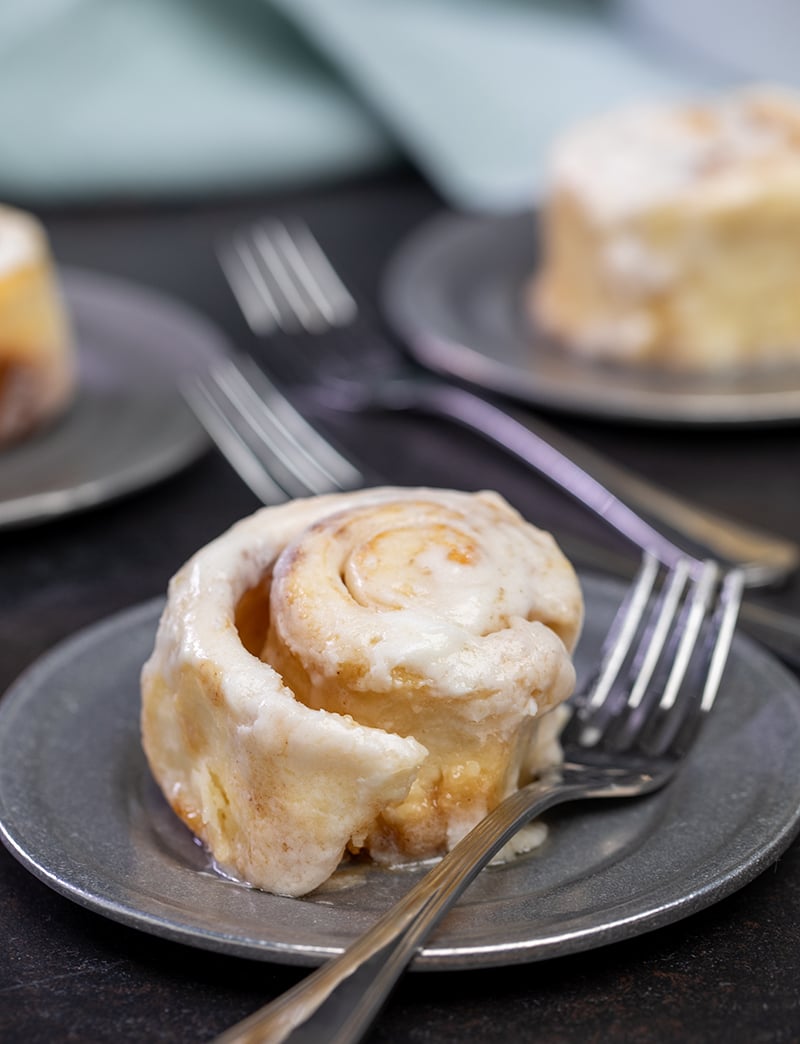
substitutions
Ingredient substitutions
Dairy-free: Use powdered coconut milk in place of milk powder. Substitute vegan butter for dairy butter, and choose a nondairy milk with fat (like almond milk, not fat-free).
Egg-free: Replace the egg with a chia egg (1 tablespoon ground white chia seeds + 1 tablespoon lukewarm water, mixed and gelled).
No apple cider vinegar or cream of tartar: Use white wine vinegar instead of apple cider vinegar, and lemon juice (½ teaspoon) in place of cream of tartar.
make ahead tip
Parbake and freeze
To make fresh cinnamon rolls in the morning without overproofing:
- Shape the rolls and let them rise as usual.
- Bake at 300°F for 15 minutes—until puffed but very pale.
- Let cool completely, then wrap tightly and freeze.
- When ready to serve, defrost at room temp.
- Bake at 350°F for about 10 minutes, until browned and bubbling.
Gluten Free Cinnamon Rolls Recipe
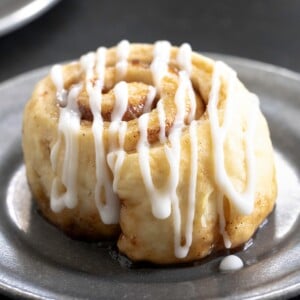
Equipment
- Stand mixer with paddle attachment
Ingredients
For the rolls
- 3 cups (420 g) all purpose gluten free flour blend, (See Recipe Notes), plus more for sprinkling
- 2 teaspoons xanthan gum, omit if your blend already contains it
- ¼ cup (36) tapioca starch/flour
- ½ cup (43 g) dry milk powder, or buttermilk powder; make sure it's powder, not liquid!
- 3 teaspoons (6 g) instant yeast
- ¼ teaspoon cream of tartar
- ¼ teaspoon baking soda
- 2 tablespoons (26 g) packed light brown sugar
- 1 teaspoon kosher salt
- 1 teaspoon apple cider vinegar
- 4 tablespoons (56 g) unsalted butter, at room temperature
- 1 (50 g (weighed out of shell)) egg, at room temperature, beaten
- 1 ¼ cups (10 ounces) warm milk, about 95°F (plus a bit more, only as necessary)
For the filling
- 4 tablespoons (56 g) unsalted butter, at room temperature
- ¾ cup (164 g) packed light brown sugar
- 1 teaspoon ground cinnamon
For an optional glaze
- 1 cup (115 g) confectioners' sugar, sifted
- 1 tablespoon milk, any kind, plus more by the 1/4 teaspoonful
For an optional frosting
- 6 tablespoons (84 g) unsalted butter, at room temperature
- 2 cups (230 g) confectioners' sugar, sifted
- 3 tablespoons heavy whipping cream, at room temperature, plus more as necessary
Instructions
- Grease a 9-inch x 13-inch casserole dish and set it aside.
Make the dough
- In the bowl of a stand mixer fitted with the paddle, whisk together the flour, xanthan gum, tapioca starch, milk powder, yeast, cream of tartar, baking soda, and sugar. Add the salt and whisk again.
- Add the vinegar, butter, egg, and milk, and mix to combine.
- Increase the mixer speed to high and beat for about 3 minutes, until the dough is smooth and pulling away from the sides.
- Transfer the dough to a sealed container and refrigerate for 30 minutes to make it easier to handle.
Roll out the dough
- Turn the chilled dough onto a lightly floured surface and knead gently to smooth.
- Divide in half, keeping one half covered. Roll the other into a 9×12-inch rectangle about ½ inch thick, dusting with flour as needed.
Add the filling and shape
- Spread half the softened butter over the dough, leaving a 1-inch border. Sprinkle with half the brown sugar, pat it down, then sprinkle with cinnamon.
- Starting from a short side, roll the dough tightly into a coil. Slice into 6 rolls using floss or a sharp knife.
- Place in a greased 9×13-inch pan, 1 inch apart. Press each roll down about ⅓ of the way to flatten slightly.
- Repeat with the second half of the dough and filling.
Let rise
- Cover the pan with lightly oiled plastic wrap. Let rise in a warm spot until the rolls are about 50% larger—about 45 minutes.
Bake
- Preheat oven to 350°F.
- Remove plastic wrap and bake for 20 minutes, until risen, lightly golden, and baked through.
- Let cool for 5 to 10 minutes before icing or frosting, but no longer.
Optional glaze.
- Whisk together confectioners’ sugar and milk until thick but pourable. Add more milk ¼ teaspoon at a time if needed.
- Drizzle over warm rolls.
Optional frosting
- Beat butter and confectioners’ sugar until smooth. Add cream gradually to reach a spreadable consistency.
- Spread generously over warm rolls.
Notes
Nutrition
Nutrition information is automatically calculated, so should only be used as an approximation.
leftovers
Storage instructions
Let the rolls cool completely before storing. Wrap tightly and freeze in a single layer before adding glaze.
To reheat, defrost at room temp, sprinkle with a bit of water, and warm in a 275°F oven until soft and heated through.
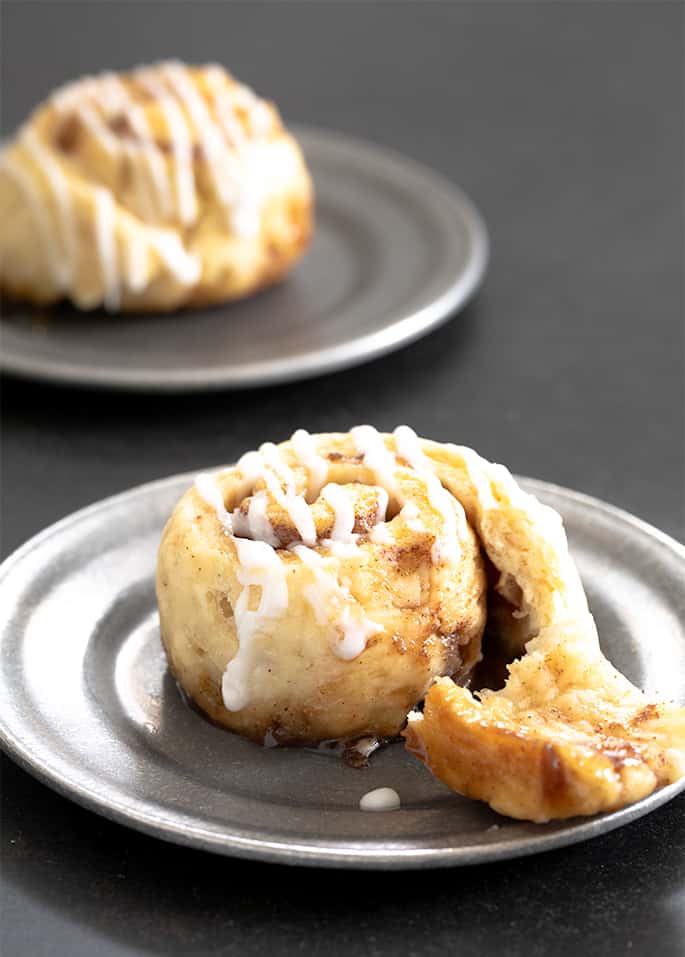
FAQs
Be patient. Gluten free yeast dough takes time to rise and usually won’t double. If they seem stalled, the environment may be too cold.
Most likely causes: too much flour during shaping or not enough proofing time. Make sure to let the dough rise until noticeably puffy.
Check that you used the correct flour blend, measured by weight, and used dry milk powder—not liquid. Sticky dough often means it’s overhydrated.
They may have overbaked, or the flour blend may have absorbed too much moisture. Avoid adding extra flour while shaping.
Yes. Use 25% more (about 8g total) and dissolve it in some of the milk before adding it to the dough.
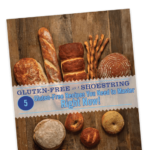

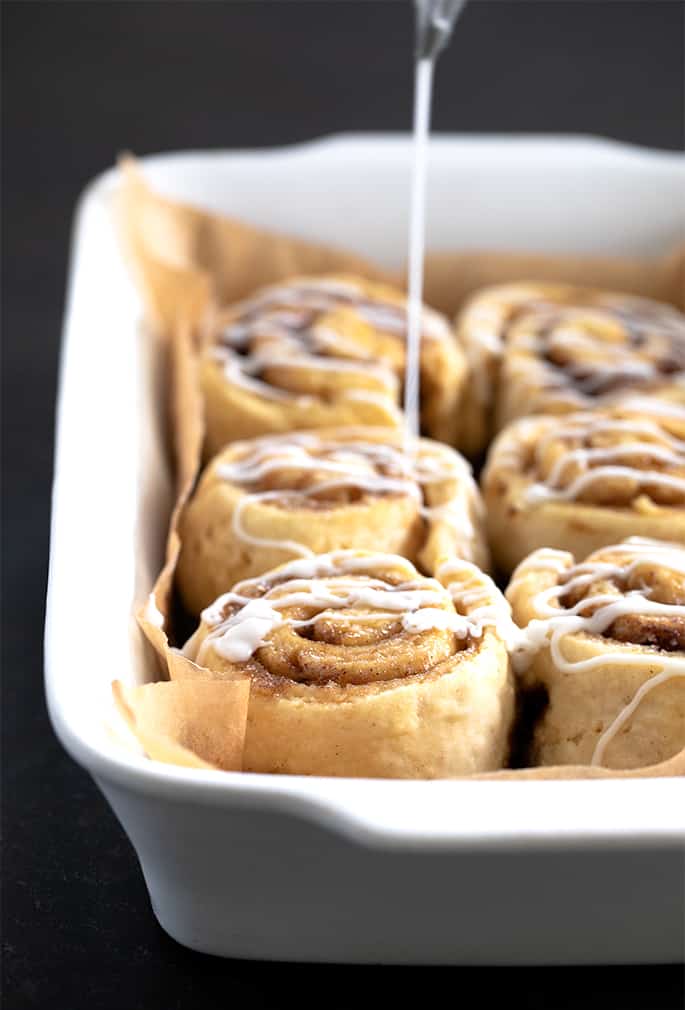
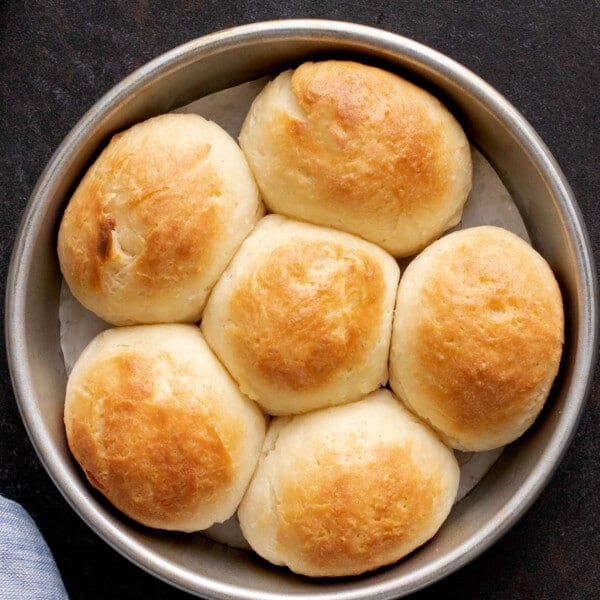
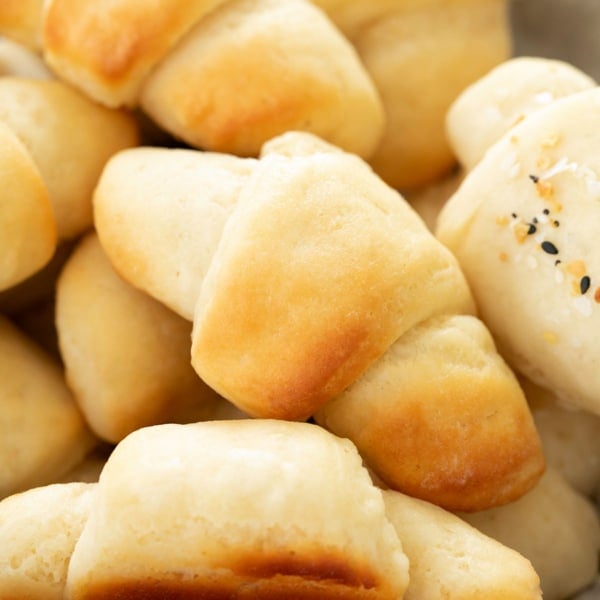
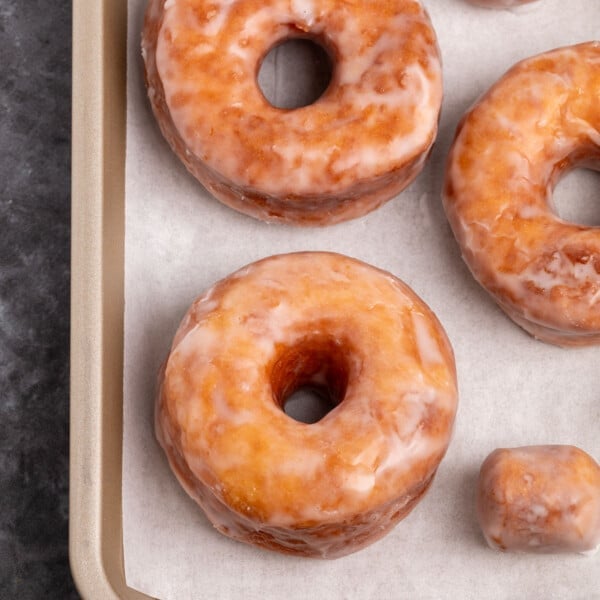
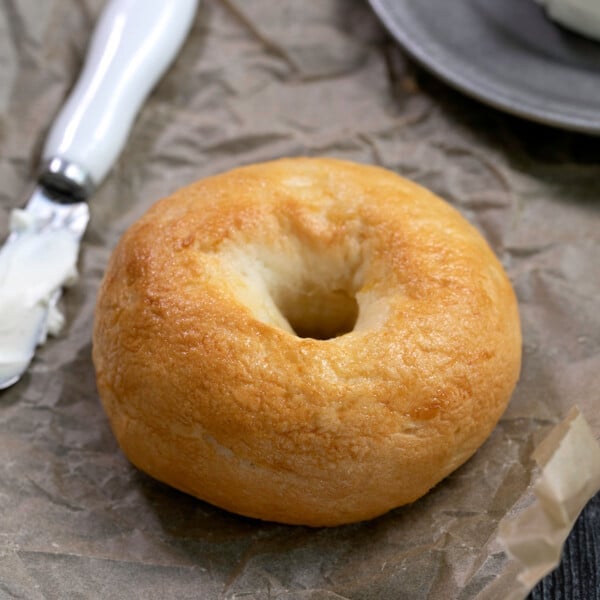









More difficult non-dairy challenge.
My wife is allergic to dairy and coconut, so powdered coconut milk won’t work either. (Nor will most nuts)
Do you have any other thoughts about that ingredient.
Understand if you don’t, just curious if you have some thoughts.
I’m afraid I don’t know of a coconut-free nondairy powdered milk substitute that would reliably work in baking, no. There are powdered plant-based milks that are sold today, but those aren’t really comparable to dairy milk. Soy milk powder might be one to try, but soy products tend to create tough (meaning, the opposite of tender) baked goods. Sorry I can’t help more!
Just made these for the first time. Most of the butter and cinnamon came out and is covering the bottom of the pan. What did I do wrong?
I’m afraid I really can’t know what happened. The thing that’s most likely is if you didn’t roll the dough large enough, which led you to pack too much filling into a too-small roll. That, and not rolling it tightly to properly seal the dough, or using butter that was too warm and melty before it even went into the oven. Those are just a few possibilities.
This dough was outrageously sticky. Followed the recipe with neurotic exactness because I was really stoked for this. I can’t tell you what went wrong, but it was non-workable in the state I had it. I even did all the extra things recommended in the text. But yeah. Even with the floured work surface and what not, it was sticking to my fingers, the table, the roller. Simply way too wet. Frustrating. Used the recommended flour and all.
When you say you used the recommended flour, Brady, are you speaking about Better Batter? And did you measure by weight, not volume? I also suspect that some people are using actual liquid buttermilk, instead of buttermilk powder, which would absolutely be too much moisture. It’s common to assume that they’re interchangeable, but they’re definitely not. Happy to try to help troubleshoot more, but I’d need more info!
I attempted this recipe 3 times and today I’ve finally had complete success! The only difference I made is I found more success letting it rise first, then rolling it out. Otherwise this is an amazing recipe and I appreciate your thoroughness in creating this, it helped a ton!
I have a lot of experience baking GF. I Tried it twice with two different flour blends (Cup4cup and King Arthur) first batch was sticky and unusable. Second batch was a little better because I left out about 1/2 cup of the water. And everything was measured by volume including the water-and I always balance my scale before baking. Dough simply stuck to everything even adding probably an extra 1/2 to 1 cup of flour in the kneading process. Rolling out was a laughable process and there’s nowhere near enough dough to get two 9×12 rectangles with 1/2 inch thickness. Holes everywhere when I tried to roll them. I’m sure there’s a great GF cinnamon roll recipe out there. I’m also certain it’s not this one.
That sounds very frustrating, Kelly, but I’m afraid I really can’t tell why or how this recipe didn’t turn out for you. The time that you used King Arthur Flour, that’s one of the brands that I recommend very strongly against, and performs particularly poorly with yeast applications (by their own admission, even, I believe). I also imagine that, since you used that blend at all and particularly in yeast bread, you haven’t clicked through to my all purpose gluten free flour blends page, where I explicitly caution against using that blend.
I haven’t tried this particular recipe with Cup4Cup, which is generally best suited to pastry applications as it’s very high in starch, but I suspect that’s the issue—plus if you didn’t use the buttermilk blend, or made other ingredient substitutions, which you didn’t say (and is very very common). I’ve checked and double-checked all the ingredients, thinking that perhaps I made an error in transferring this to a new recipe format, but it’s correct. This is one of the oldest recipes on the site, and has worked every single time I’ve made it with Better Batter or my mock Better Batter, and it will work when made with that blend. But I will test it with Cup4Cup and report back if there are any modifications that I find useful (or just with my results).
Since you’re certain that this isn’t a good recipe, which of course I disagree with, clearly you aren’t interested in troubleshooting. But the recipe does work when made as written, and I will report back for others’ benefit with my results with Cup4Cup.
No other substitutions, used the buttermilk powder per the recipe. I used KA All Purpose flour, not measure for measure, which I have frequently used VERy successfully in yeasted applications. My go to bread and dinner rolls are made with it and it works amazingly. Lots of other people seem to have the same complaint including that new review, sounds like you aren’t interested in fixing your recipe that many say is bad.
You simply can’t use King Arthur Flour in my recipes at all, Kelly. It won’t work. There’s nothing to “fix” in a recipe when I state clearly and unequivocally that the flour you’re using won’t work. That company even recommends against using that flour in yeast breads. At least now I know what happened. I’ve been checking, double-checking, and triple-checking this recipe, and made it again last week. It’s your flour. The recipe isn’t “bad,” and it has 4.95 stars from 210 votes. I’m not perfect and I make mistakes sometimes. But I’ve vetted this recipe, and read and considered your comments. This isn’t one of those times!
Hi Nicole,
Just curious if you ended up trying this recipe with Cup4Cup? I tried using it the other day and the dough was much too wet and sticky. Would love your feedback on how to adjust the recipe for this particular flour brand.
Thanks!
No, I haven’t tried this recipe with Cup4Cup, but as I explain on the all purpose gluten free flour blend page on the blog, Cup4Cup is best for pastries.
my yeast did not rise. i will not mix with flour again. it needs hot water and sugar to grow then flour
Leslie, that sounds frustrating, but your statement isn’t correct. Instant yeast, which this recipe calls for, does not need to be proofed. If you used active dry yeast, it must be proofed, and you’d need more of it, both of which are explained in the post.
I have a severe allergy to apples in any form, so can you use regular vinegar instead of apple cider vinegar in your baking.
What is the difference?
I discuss how to replace the apple cider vinegar in the Ingredients and Substitutions section of the post, Nancy. Apple cider vinegar adds a nice tangy flavor to baked goods, and helps activate chemical leaveners for additional lift.
Do you have to use butter? Due to allergies Would vegan margarine work
Please see the dairy-free subheading in the ingredients and substitutions section of the blog post, Elma. I always provide information on how to avoid dairy in that section of each post.
Where do I get the gluten free flour?
Please follow the link in the recipe for all purpose gluten free flour for full information, Louise.
Hi Nicole. I am so very excited to try out your recipe! My question is: Under the “Temperature and Time” section, you mention that once the dough is 50% larger, it is considered fully risen. However, in the direction portion of the recipe, you mention that the dough should be left to rise until it is 150% of its original size. My dough is in the rising phase now. I will check on it in an hour, but am confused by the notes.
Lynn, 50% larger is another way of saying 150% of its original size.
What can I substitute the egg with? Or can it be omitted altogether? Both my son and I are allergic to eggs.
Please see the ingredients and substitutions section, Sara, for all the information I have on substitutions!